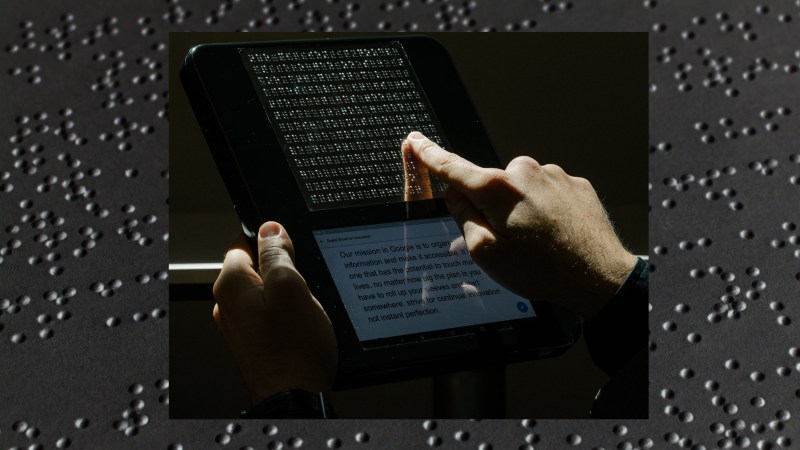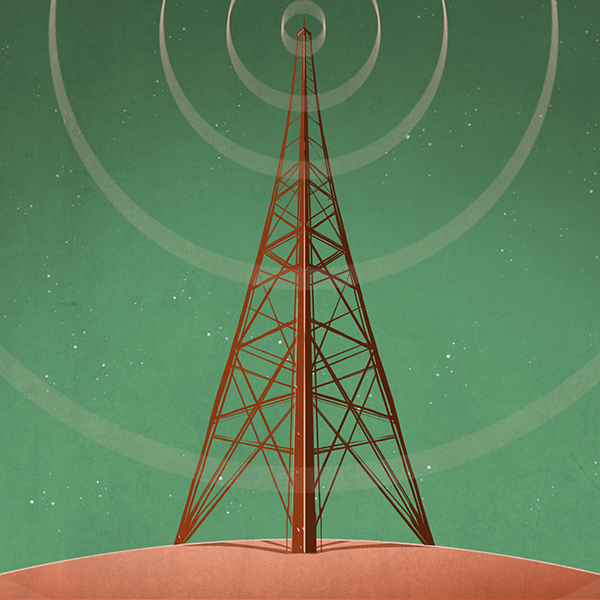Signing up for college classes can be intimidating, from tuition, textbook requirements, to finding an engaging professor. Imagine signing up online, but you cannot use your monitor. We wager that roughly ninety-nine percent of the hackers reading this article have it displayed on a tablet, phone, or computer monitor. Conversely, “Only one percent of published books is available in Braille,” according to [Kristina Tsvetanova] who has created a hybrid tablet computer with a Braille display next to a touch-screen tablet running Android. The tablet accepts voice commands for launching apps, a feature baked right into Android. The idea came to her after helping a blind classmate sign up for classes.
Details on the mechanism are not clear, but they are calling it smart liquid, so it may be safe to assume hydraulic valves control the raised dots, which they call “tixels”. A rendering of the tablet can be seen below the break. The ability to create a full page of braille cells suggest they have made the technology pretty compact. We have seen Braille written on PCBs, a refreshable display based on vibrator motors, and a nicely sized Braille keyboard that can fit on the back of a mobile phone.

















Unlikely it uses valves, due to dot density and power requirements. More likely it’s something like this:
https://en.wikipedia.org/wiki/Smart_fluid
…or this:
https://en.wikipedia.org/wiki/Ferrofluid
…a fluid which mechanically changes its volume locally, in the presence of an electric field would be my guess.
Interesting. Thank you for the links. I wonder how else this could be done.
Maybe a bunch of small piezoelectric diaphragms under a column of fluid covered with an elastic cover on top? like a short column under every dot with its own diaphragm, no plumbing or valves involved.
Kind of like this but without the check valves. I wonder if they can maintain a contraction or are they required to oscillate?
https://www.servoflo.com/micropumps/mp6
https://en.wikipedia.org/wiki/Refreshable_braille_display#Mechanical_details
Well I went and did some googling and it turns out some do use piezo and levers at least, but that’s probably not the case here. Maybe the fluid takes the place of the lever, whereby a filled channel is tapered to be wider at the piezoelectric actuator and narrower at the elastic surface which raises to become a dot, magnifying the minute distance a peizo moves. Pure speculation on my part.
still fantastic. I read about this around four years ago when it just got the first big press run – the price tag announced back then was VERY attractive. We need MORE people like these.
unlikely that it has been made or works, entire video is 3d renders.
I bet you didn’t believe in Theranos either ;)
+1 for Theranos :-)
+1 what?
I wonder if one could have a small finger-sized dot display in a glove, which would change state depending on where the capacitive touchscreen senses the finger. A virtual large screen, “seen” through a small window at a time.
If you make a prototype, that is something we would be eager to write up.
There is a video, “BLITAB: A Tablet for the Blind at CES 2017” that has a (very) brief explanation of how it works (starting at 1:25 and lasting about 15 seconds).
It apparently uses air and flexible membranes.
https://www.youtube.com/watch?v=iF3ZP5ze5jU
Advertise something for the blind and never say a word about it aloud.
What is the most terrifying thing for a blind person to read in braille ? – “Do not touch!”